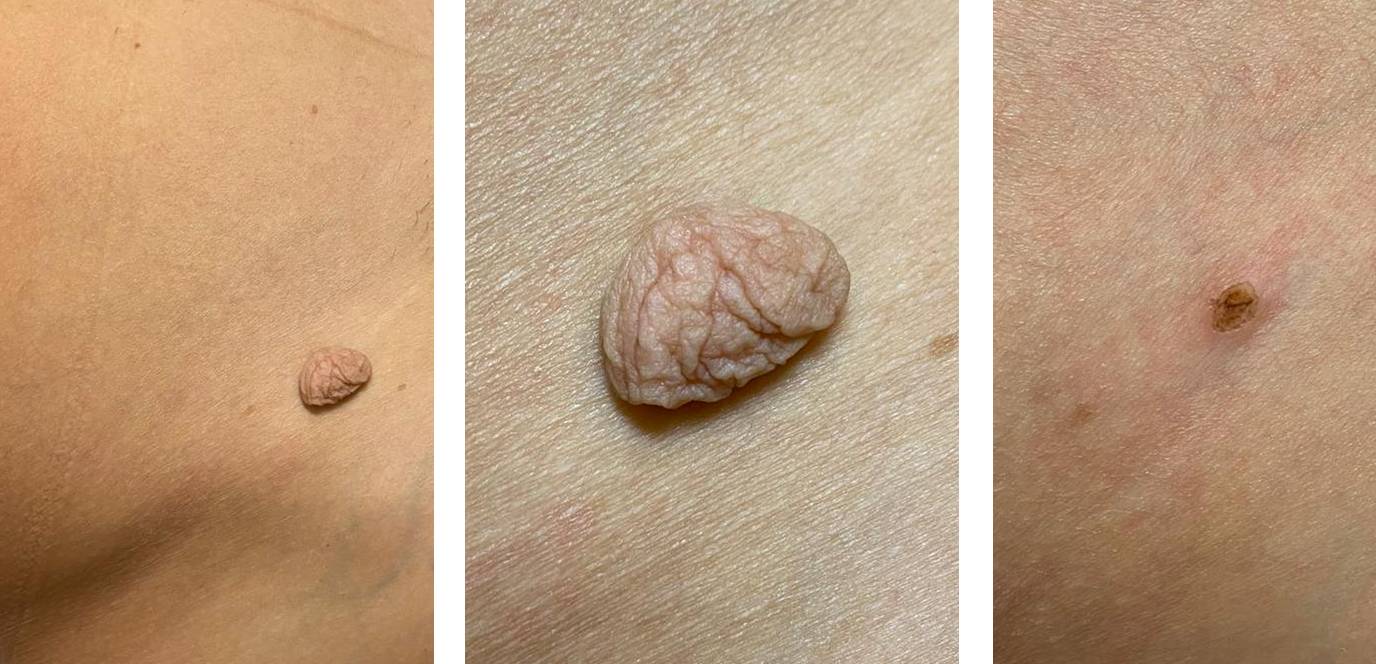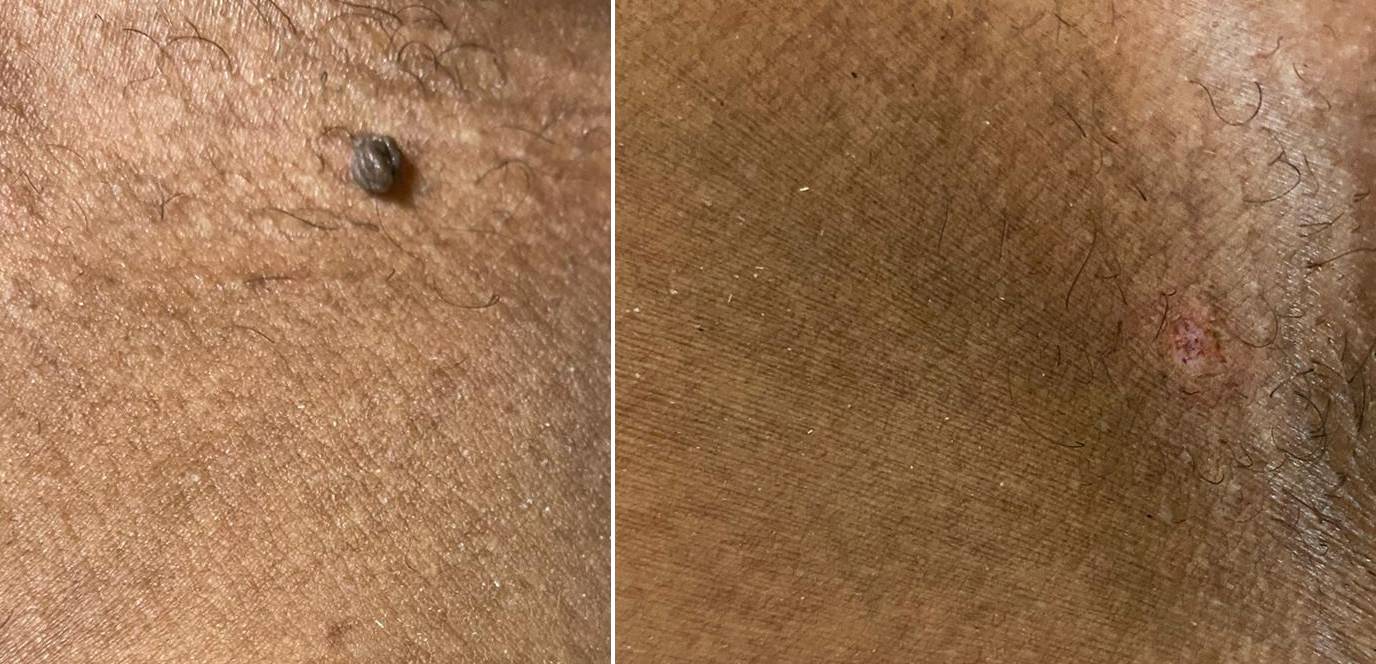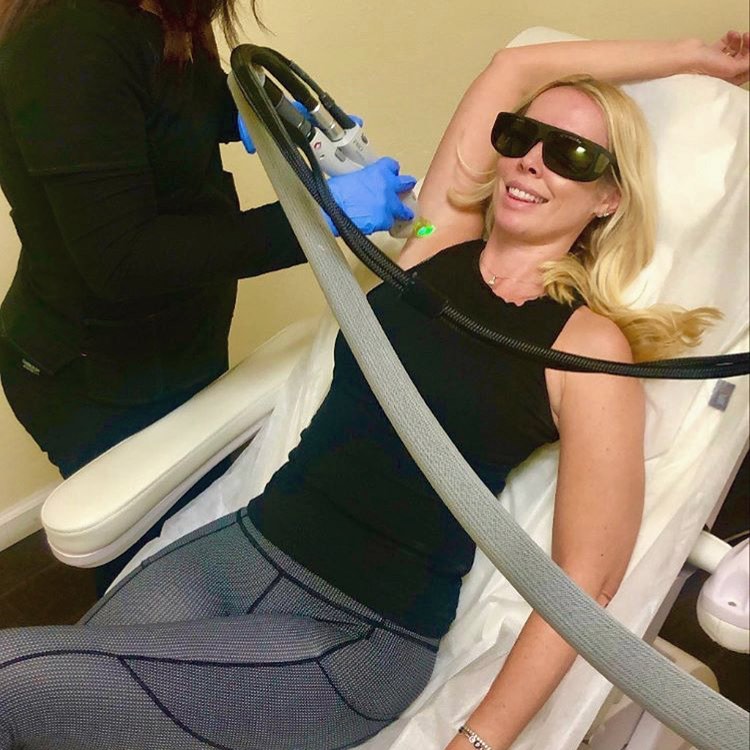Spoiled Laser, your go-to destination for beauty transformation, brings you a precise solution for skin tag removal: the art of using scissors. Our experts have mastered the technique to effectively eliminate skin tags, so you can achieve flawless skin. Skin tags, those pesky benign growths that often appear in areas of friction, can now be easily removed with the utmost precision. Say goodbye to discomfort and hello to a smoother, more confident you with the precise solutions offered by Spoiled Laser.
Article Title
Precise Solutions: The Art of Skin Tag Removal with Scissors
Get Your Free Consultation Today
Table of Contents
Introduction
1. Understanding Skin Tags
1.1 Definition and Characteristics
1.2 Causes and Risk Factors
1.3 Locations on the Body
2. The Science Behind Scissor Skin Tag Removal
2.1 How Does It Work?
2.2 Benefits of Scissor Removal
3. Preparation for Skin Tag Removal
3.1 Consultation with a Dermatologist
3.2 Gathering the Necessary Tools
4. Step-by-Step Guide to Scissor Skin Tag Removal
4.1 Sterilizing the Scissors and the Skin Area
4.2 Numb the Area with a Topical Anesthetic
4.3 Snip the Skin Tag Carefully
4.4 Control and Prevent Bleeding
4.5 Apply Antiseptic and a Bandage
5. Aftercare and Healing Process
5.1 Tips for Cleanliness and Hygiene
5.2 Post-Removal Care Instructions
5.3 Recognizing Signs of Infection
6. Potential Risks and Complications of Scissor Removal
6.1 Bleeding and Bruising
6.2 Infection and Scarring
6.3 Allergic Reactions
7. When to Seek Professional Help
7.1 Importance of Professional Assessment
7.2 Suitable Candidates for Self-Removal
7.3 Red Flags for Seeking Medical Assistance
8. Other Methods of Skin Tag Removal
8.1 Cryotherapy
8.2 Electrosurgery
8.3 Excision
9. Frequently Asked Questions (FAQs)
9.1 How Long Does It Take for Skin Tags to Fall Off after Removal?
9.2 Can Skin Tags Grow Back after Scissor Removal?
9.3 Is Scissor Skin Tag Removal Painful?
9.4 Are There Any Home Remedies for Skin Tag Removal?
10. Conclusion
Introduction
Skin tags are common skin growths that can appear on various parts of the body. While harmless, they can cause discomfort and self-consciousness. Many individuals opt for skin tag removal for cosmetic reasons. One method of removal that has gained popularity is the use of scissors. This article will explore the art of skin tag removal with scissors, including its benefits, risks, and the step-by-step process.
1. Understanding Skin Tags
1.1 Definition and Characteristics
Skin tags, medically known as acrochordons, are small, benign growths that typically appear in skin folds or areas where friction occurs. They are made up of loose collagen fibers and blood vessels, and usually have a fleshy appearance. Skin tags are painless and most commonly occur in middle-aged and older individuals.
1.2 Causes and Risk Factors
The exact cause of skin tags is unknown, but several factors may contribute to their development. Friction, hormonal fluctuations, and genetic predisposition are believed to play a role. Additionally, obesity, pregnancy, and certain medical conditions such as diabetes may increase the risk of skin tag formation.
1.3 Locations on the Body
Skin tags can develop on any part of the body, but they tend to occur in areas where skin rubs against skin or clothing. Common locations include the neck, underarms, eyelids, groin area, and under the breasts. They can vary in size and number, with some individuals having just a few while others may have multiple skin tags.
2. The Science Behind Scissor Skin Tag Removal
2.1 How Does It Work?
Scissor skin tag removal involves carefully using sterilized scissors to cut off the skin tag at its base. The goal is to completely remove the tag without causing excessive bleeding or damage to the surrounding skin. This method is commonly performed by dermatologists or individuals who have received proper training.
2.2 Benefits of Scissor Removal
Scissor removal offers several advantages. It allows for precise removal of skin tags, especially those located in delicate or hard-to-reach areas. The procedure is relatively quick, and the recovery time is minimal. Additionally, scissor removal is cost-effective compared to other methods such as cryotherapy or electrosurgery.
3. Preparation for Skin Tag Removal
3.1 Consultation with a Dermatologist
Before attempting scissor skin tag removal, it is important to consult with a dermatologist. A dermatologist can assess the skin tags, provide a diagnosis, and determine if scissor removal is suitable for the individual. They can also address any concerns or questions the person may have.
3.2 Gathering the Necessary Tools
To perform scissor skin tag removal, a person will need specific tools. These include a pair of sterilized medical scissors, gloves, a topical anesthetic (optional), antiseptic solution, cotton swabs, and sterile bandages. It is essential to gather all the required tools and ensure they are clean and sterile before proceeding with the procedure.
4. Step-by-Step Guide to Scissor Skin Tag Removal
4.1 Sterilizing the Scissors and the Skin Area
Before beginning the removal process, it is crucial to sterilize the scissors and the skin area to minimize the risk of infection. The scissors can be sterilized by soaking them in rubbing alcohol or boiling them in water. The skin area should be thoroughly cleaned with soap and water, followed by an application of an antiseptic solution.
4.2 Numb the Area with a Topical Anesthetic
If desired, a topical anesthetic can be applied to the skin tag to numb the area and minimize discomfort. This step is optional but may make the removal process more tolerable for some individuals. The anesthetic should be applied according to the manufacturer’s instructions.
4.3 Snip the Skin Tag Carefully
Using the sterilized scissors, carefully snip the skin tag at its base, as close to the healthy skin as possible. It is crucial to ensure a clean cut to prevent any remaining tag tissue, which could lead to skin tag regrowth. The scissors should be used with precision and caution to avoid injury.
4.4 Control and Prevent Bleeding
After snipping the skin tag, it is essential to control and prevent bleeding. Gently apply pressure to the area with a sterile cotton swab or gauze until the bleeding stops. If bleeding persists, seek medical attention. It is crucial to avoid applying excessive pressure or using excessive force, as this can cause further damage.
4.5 Apply Antiseptic and a Bandage
Once the bleeding has stopped, clean the area again with an antiseptic solution to further minimize the risk of infection. Apply a sterile bandage to the wound to protect it from bacteria and friction. The bandage should be changed regularly according to the dermatologist’s instructions.
5. Aftercare and Healing Process
5.1 Tips for Cleanliness and Hygiene
After skin tag removal, it is important to maintain cleanliness and hygiene to promote proper healing. Regularly wash the area with mild soap and warm water. Avoid scrubbing or picking at the wound, as this can delay the healing process and increase the risk of infection.
5.2 Post-Removal Care Instructions
Following the removal procedure, the dermatologist may provide specific care instructions based on the individual’s circumstances. These instructions may include keeping the area dry, avoiding exposure to sunlight, and refraining from using harsh skin products or cosmetics on the treated area.
5.3 Recognizing Signs of Infection
It is crucial to monitor the healing process and be vigilant for signs of infection. Symptoms of infection may include increased pain, redness, swelling, pus, or a foul odor. If any of these signs are observed, it is essential to seek prompt medical attention.
6. Potential Risks and Complications of Scissor Removal
6.1 Bleeding and Bruising
While scissor removal is generally considered safe, it does carry some risks. Bleeding and bruising are common complications that may occur during or after the procedure. Proper technique and control of bleeding can help minimize these risks.
6.2 Infection and Scarring
If proper hygiene and aftercare instructions are not followed, the risk of infection and scarring may increase. It is important to keep the area clean, apply antiseptic solutions, and change bandages regularly to reduce the likelihood of complications.
6.3 Allergic Reactions
Some individuals may experience an allergic reaction to the topical anesthetic or other products used during the removal process. It is crucial to inform the dermatologist of any known allergies or sensitivities before undergoing the procedure.
7. When to Seek Professional Help
7.1 Importance of Professional Assessment
While scissor skin tag removal can be performed at home, it is important to emphasize the significance of professional assessment. A dermatologist can properly diagnose skin tags, assess their suitability for scissor removal, and provide personalized advice based on the individual’s specific needs.
7.2 Suitable Candidates for Self-Removal
Not all individuals are suitable candidates for self-removal of skin tags with scissors. Those with certain medical conditions such as diabetes or compromised immune systems may require professional assistance. Additionally, individuals with large or multiple skin tags may benefit from a dermatologist’s expertise.
7.3 Red Flags for Seeking Medical Assistance
Certain symptoms or circumstances may warrant seeking immediate medical assistance. These include excessive bleeding, signs of infection, severe pain, or if the skin tag does not respond to self-removal attempts. It is always better to err on the side of caution and consult a healthcare professional when in doubt.
8. Other Methods of Skin Tag Removal
8.1 Cryotherapy
Cryotherapy involves freezing the skin tag with liquid nitrogen. This method causes the tag to die and fall off within a few days or weeks. Cryotherapy is performed by a dermatologist and may require multiple treatments for complete removal.
8.2 Electrosurgery
Electrosurgery uses a high-frequency electrical current to burn off the skin tag. This method is effective for larger or stubborn skin tags. It should only be performed by a trained healthcare professional to minimize the risk of burns or other complications.
8.3 Excision
Excision involves cutting out the skin tag with a scalpel or surgical scissors. This method is typically used for larger skin tags or those that are suspected of being cancerous. Excision is performed by a dermatologist under local anesthesia.
9. Frequently Asked Questions (FAQs)
9.1 How Long Does It Take for Skin Tags to Fall Off after Removal?
After scissor removal, skin tags typically fall off within a few days, although the healing process can vary from person to person. It is important to follow proper aftercare instructions to facilitate the healing process.
9.2 Can Skin Tags Grow Back after Scissor Removal?
In some cases, skin tags may grow back, especially if the entire tag is not completely removed at the base. However, scissor removal can provide long-lasting results when performed accurately.
9.3 Is Scissor Skin Tag Removal Painful?
Scissor removal of skin tags is generally not painful, as numbing agents can be used to minimize discomfort. However, individuals may experience mild sensations or slight discomfort during the procedure.
9.4 Are There Any Home Remedies for Skin Tag Removal?
While various home remedies claim to remove skin tags, it is important to exercise caution. There is limited scientific evidence supporting their effectiveness, and attempting to remove skin tags at home without medical supervision may increase the risk of complications or infection.
10. Conclusion
The art of skin tag removal with scissors offers a precise and cost-effective solution to eliminate these benign growths. By following proper preparation, technique, and aftercare instructions, individuals can safely remove skin tags at home. However, it is crucial to seek professional assessment when necessary and be aware of potential risks and complications. Ultimately, achieving skin tag-free skin can boost self-confidence and improve overall well-being.




